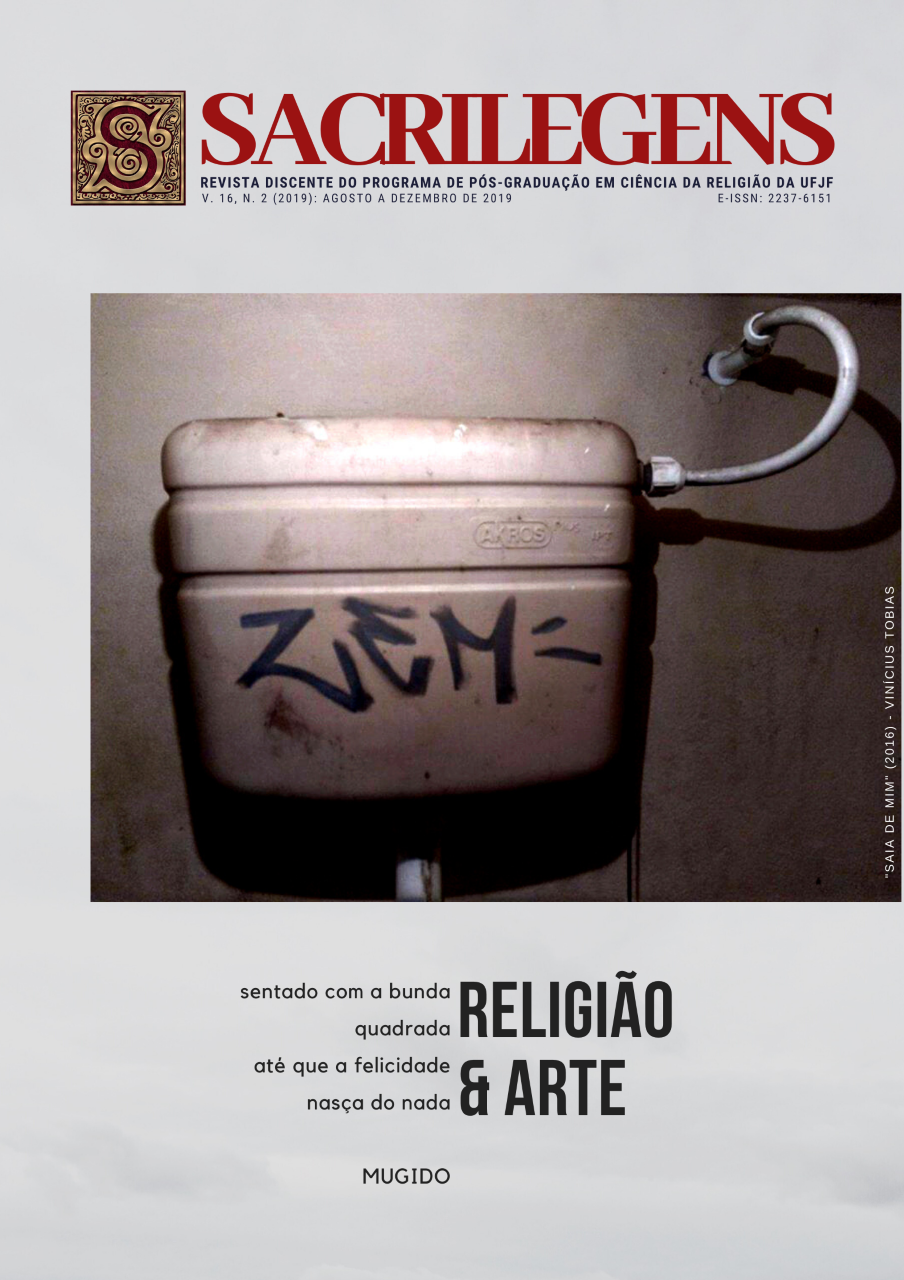DIONISO UMA REVISITAÇÂO AO SELVAGEM
DOI:
https://doi.org/10.34019/2237-6151.2019.v16.28891Palabras clave:
Dioniso, Mênades, Natureza, Eurípides, PenteuResumen
Esta proposta busca analisar a simbologia presente nas figuras de Dioniso e de Penteu na tragédia de Eurípides, utilizando a peça como chave hermenêutica para compreensão da oposição entre o sentimento de polis e a experiência natural dionisíaca, vivenciada pelas mênades. O trabalho tem como objetivo compreender a iniciação ao culto de Dioniso Lysios como possibilidade para uma transformação na forma de como o sujeito se compreende no mundo e age perante o espaço natural. Através de uma análise literária propõe-se uma revisitação a uma condição de natureza ainda não exteriorizada, não separada do Ser. Busca-se também compreender a possibilidade de como os indivíduos poderiam experienciar uma relação mais harmônica com o mundo natural dentro da polis, diferente das mênades que buscavam o abrigo das montanhas. O homem civilizado diante da problemática de seu afastamento com a Natura parte em direção a uma possível reeducação de seu olhar para vivenciar aquele ambiente selvagem proposto por Dioniso.
Descargas
Citas
__________; tradução Jaa Torrano – In: Bacas. São Paulo: Editora Hucitec, 1995.
__________; tradução Trajano Vieira – In: As Bacantes de Eurípides. São Paulo: Perspectiva, 2010.
ELIADE, Mircea. Mitos, Sonhos e Mistérios. Lisboa: Edições 70, 1957.
HADOT, Pierre. O Véu de Isis: Ensaio Sobre a História da Ideia de Natureza. São Paulo: Edições Loyola, 2006.
HENRICHS, Albert. Between Country and City: Cultic Dimensions of Dionysus in Athens and Attica. In: Scholar Press, Dept. of Classics. Berkeley, Univ. of California, p. 257-277, 2005.
HESÍODO. Teogonia: A Origem dos Deuses / Hesiodo; tradução Jaa Torrano. São Paulo: Iluminuras, 2001.
HOMERO. Ilíada / Homero; tradução e prefácio de Frederico Lourenço; introdução e apêndices de Peter Jones. São Paulo: Penguin Classics Companhia das Letras, 2013.
__________. Odisseia / Homero; tradução e prefácio de Frederico Lourenço; introdução e apêndices de Bernard Knox – São Paulo: Penguin Classics Companhia das Letras, 2011.
KERÉNYI, Karl. A Mitologia dos Gregos I: A História dos Deuses e dos Homens. Petrópolis: Editora Vozes, 2015.
__________. XV Dioniso e suas Companheiras. In: Mitologia dos Gregos I: A História dos Deuses e dos Homens. Petrópolis: Editora Vozes, p. 156-176, 2015.
LARSON, Jennifer. Epiphany and Transformation: Dionysos. In: Ancient Greek Cults. New York: Routledge, 2007.
__________. A Land Full of Gods: Nature Deities in Greek Religion. In: A Companion to Greek Religion. Massachusetts: Blackwell Publishing Ltd, p. 56-70, 2007.
SOUSA, Maria de Fátima Silva. Bacantes de Eurípides: Símbolos em Confronto. In: Synthesis, v. 14, p. 11-30, 2007. Disponível em: http://www. memoria.fahce.unlp. edu.ar/art_revistas/pr.407/pr.407.pdf.
TRABULSI, José Antonio. Dionisismo, poder e sociedade na Grécia até o fim da época clássica. Belo Horizonte: Editora UFMG, 2004.
TORRANO, Jaa. Hinos Homéricos a Dioniso. Disponível em: https://www.academia.edu/9915772/Hinos_Hom%C3%A9ricos_a_Dioniso. Acesso: 22 de outubro de 2019, às 20:36.
VERNANT, Jean-Pierre. Mito e Religião na Grécia Antiga. São Paulo: Martins Fontes, 2009.
WOODARD, Roger. The Cambridge Companion to Greek Mythology / edited by Roger Woodard. Nova York: Cambridge University Press, 2007.
Descargas
Publicado
Cómo citar
Número
Sección
Licencia
 A Revista Sacrilegens é um periódico de acesso aberto, licenciada sob a licença Creative Commons Attribution 4.0 International
A Revista Sacrilegens é um periódico de acesso aberto, licenciada sob a licença Creative Commons Attribution 4.0 International










